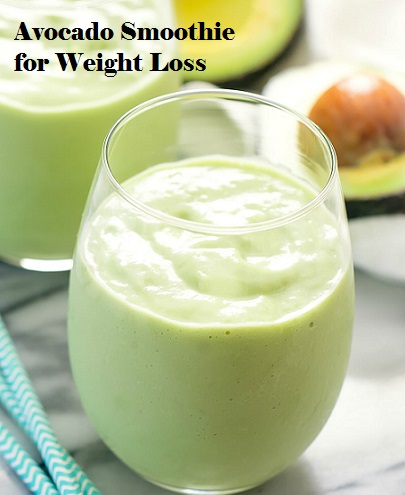
What Is The Best Intermittent Fasting To Lose Belly Fat – What is the best intermittent fasting Window to lose belly fat?
Intermittent fasting to lose belly fat is the period when you control and regulate your eating to optimize the potential benefits of fasting, such as improved metabolism, better insulin sensitivity, and potentially, weight loss. The specific fasting window you choose will depend on your personal schedule, lifestyle, and what works best for you to adhere to the fasting practice.
So, Intermittent fasting can be an effective approach for weight loss and reduce belly fat. Several popular intermittent fasting methods exist, and each has its benefits.
What Is Intermittent Fasting Window
The intermittent fasting window refers to the specific time period during which you choose to eat your meals, alternating with a fasting period where you abstain from consuming any calories. The fasting window is the duration when you do not eat, and the eating window is when you consume your meals for the day.
For example, if you are following the popular 16/8 method, your intermittent fasting window would be 16 hours of fasting followed by an 8-hour eating window. During the 16-hour fasting period, you do not consume any calories, and you only eat within the 8-hour window.
The timing of the fasting and eating windows can be adjusted to suit your lifestyle and preferences. Some people may prefer to have their fasting window from 7:00 PM to 11:00 AM the next day, while others might choose a different time frame, such as from 9:00 PM to 1:00 PM.
It’s important to note that during the fasting window, you should avoid consuming any calories, but you can still drink water, plain tea, or black coffee, as these beverages typically do not interfere with the fasting process.
What Is Belly Fat?
Belly fat, also known as abdominal or visceral fat, is the fat that accumulates around the abdominal area, particularly within and around the abdominal organs. It is different from subcutaneous fat, which is the fat located directly under the skin.
Types of Belly Fat
Belly fat can be categorized into two types:
Subcutaneous Fat
This type of fat is located just beneath the skin and can be felt when pinched. While it contributes to overall body fat, subcutaneous fat is not as metabolically active as visceral fat and is generally considered less harmful to health.
Visceral Fat
Visceral fat is the more dangerous type of belly fat as it accumulates deep inside the abdominal cavity, surrounding vital organs such as the liver, pancreas, and intestines. Visceral fat is not visible from the outside, and it can’t be pinched. This type of fat is metabolically active and releases hormones and other substances that can have adverse effects on various aspects of health.
Because visceral fat may discharge fatty acids, cholesterol, and other dangerous compounds into your system, there is a significantly higher chance of negative health impacts with this type of belly.
Side Effect Of Visceral Fat
Excessive accumulation of visceral fat is associated with an increased risk of several health conditions, including:
Type 2 Diabetes: Visceral fat can lead to insulin resistance, making it harder for the body to regulate blood sugar levels.
Cardiovascular Disease: High levels of visceral fat are linked to increased blood pressure, elevated cholesterol levels, and a higher risk of heart disease and stroke.
Metabolic Syndrome: This condition is characterized by a cluster of health issues, including high blood pressure, high blood sugar, high triglycerides, low HDL cholesterol, and excess abdominal fat.
Certain Cancers: Studies have shown that visceral fat is associated with an increased risk of certain types of cancers, such as colorectal cancer and breast cancer.
Fatty Liver Disease: Excess visceral fat can lead to a condition called non-alcoholic fatty liver disease (NAFLD).
Sleep Apnea: Visceral fat has been linked to an increased risk of sleep apnea, a sleep disorder that affects breathing during sleep.
Inflammation: Visceral fat releases inflammatory substances, contributing to chronic inflammation, which is linked to various health issues.
Losing excess belly fat through a combination of a healthy diet, regular exercise, and lifestyle changes can significantly improve overall health and reduce the risk of these associated health conditions.
Types Of Intermittent Fasting To Lose Belly Fat
Intermittent fasting can be an effective approach for losing belly fat, but the best fasting window may vary depending on individual preferences, lifestyle, and metabolism.
Intermittent Fasting 16/8 Method – 16:8 Intermittent Fasting to lose belly fat
This involves fasting for 16 hours a day and restricting eating to an 8-hour window. For example, you might eat between 12:00 PM and 8:00 PM, then fast from 8:00 PM to 12:00 PM the next day.
The popular 16/8 method, your intermittent fasting window would be 16 hours of fasting followed by an 8-hour eating window. During the 16-hour fasting period, you do not consume any calories, and you only eat within the 8-hour window.
The amount of hours you can eat throughout the day can be restricted, which will help you lose weight as well as lower blood pressure.
Additionally, people saw a 4-7% decrease in their waist circumference, a sign that they reduced belly fat.
Intermittent Fasting 18/6 Method – 18:6 Intermittent Fasting
Similar to the 16/8 method, but with a shorter eating window of 6 hours and a longer fasting period of 18 hours.
The 18/6 intermittent fasting method involves a daily fasting window of 18 hours, during which you abstain from consuming any calories, followed by an eating window of 6 hours, where you consume your meals for the day.
This approach typically means skipping breakfast and starting the eating window later in the day, such as from lunchtime until early evening. The fasting period can help the body tap into stored fat for energy and may promote weight loss, improved insulin sensitivity, and other potential health benefits. However, it’s essential to maintain a balanced diet and avoid overeating during the eating window to ensure overall nutritional adequacy and maximize the potential benefits of this intermittent fasting approach.
Intermittent Fasting 20/4 Method
Intermittent Fasting 20/4, also known as the “Warrior Diet,” is a fasting method where individuals fast for 20 hours and have a 4-hour eating window. During the fasting period, only non-caloric fluids like water, herbal tea, or black coffee are consumed, while the eating window allows for the consumption of balanced meals to meet daily nutritional needs.
This approach aims to encourage fat burning, promote metabolic flexibility, and potentially aid in weight management, but it’s essential to plan meals wisely to ensure adequate nutrition within the restricted time frame.
Intermittent Fasting 5:2 Method
With this method, you eat normally five days a week and significantly reduce calorie intake (usually around 500-600 calories) on the remaining two non-consecutive days.
The fasting days should not be consecutive and are typically spread throughout the week. During the fasting days, you consume fewer calories, allowing the body to enter a state of calorie restriction and utilize stored fat for energy.
This method may help with weight loss, improve metabolic health, and potentially offer other health benefits. However, it’s important to choose nutrient-dense foods on eating and fasting days to ensure you meet your nutritional requirements while following this intermittent fasting pattern. Before starting any fasting regimen, it is advisable to consult a healthcare professional or registered dietitian, especially if you have any underlying health conditions or specific dietary needs.
Eat-Stop-Eat Fasting
This involves fasting for a full 24 hours once or twice a week. During this fasting period, no calories are consumed, and the fasting window lasts from one dinner to the next day’s dinner.
This approach allows the body to experience extended periods without food, potentially promoting fat loss, improved insulin sensitivity, and cellular repair mechanisms.
While the longer fasting period may be challenging for some, it’s important to maintain proper hydration and focus on balanced meals on non-fasting days to ensure adequate nutrition.
However, depriving oneself of meals for a full day at a time needs a lot of effort and could result in binging and overeating in the future. Additionally, it could result in irregular eating patterns.
Alternate-Day Fasting
This approach alternates between fasting days, where you significantly reduce calorie intake or fast entirely, and regular eating days.
On fasting days, you significantly reduce calorie intake or abstain from food altogether, while on eating days, you consume meals as usual. T
his approach aims to create a calorie deficit by alternating between periods of reduced intake and regular consumption, potentially leading to weight loss and improved metabolic health. However, adherence to the alternating schedule may be challenging, and it’s important to focus on nutrient-rich foods on eating days to ensure proper nutrition.
It’s essential to pair intermittent fasting with a balanced diet and regular exercise to optimize fat loss and overall health. Consulting a healthcare professional or registered dietitian can also be beneficial, especially if you have any pre-existing health conditions or concerns. They can help tailor a fasting plan that suits your specific needs and goals.
Other Effective Strategies To Help You Lose Belly Fat
Losing belly fat requires a combination of a healthy diet, regular exercise, and lifestyle changes. Here are some effective strategies to help you lose belly fat:
Balanced Diet
Focus on eating a balanced diet that includes plenty of vegetables, fruits, lean proteins, whole grains, and healthy fats. Reduce your intake of processed foods, sugary beverages, and excessive amounts of refined carbohydrates.
Calorie Deficit
To lose fat, you need to create a calorie deficit by burning more calories than you consume. This can be achieved through a combination of reducing your calorie intake and increasing your physical activity.
Portion Control
Be mindful of portion sizes to avoid overeating. Eating smaller, more frequent meals throughout the day can help keep your metabolism active.
Intermittent Fasting
As mentioned earlier, intermittent fasting can be an effective tool for some people to manage their calorie intake and improve metabolic health.
Cardiovascular Exercise
Engage in regular cardiovascular exercises such as running, walking, cycling, or swimming. Cardiovascular workouts help burn calories and reduce overall body fat, including belly fat.
Strength Training
Incorporate strength training exercises into your routine to build lean muscle mass. Muscle burns more calories than fat, even at rest, so increasing muscle mass can boost your metabolism.
High-Intensity Interval Training (HIIT)
HIIT workouts involve short bursts of intense exercise followed by brief recovery periods. HIIT can be more effective for fat loss than steady-state cardio.
Reduce Stress
Yes, your ability to lose weight might be impacted by whether or not you feel worried. Stress not only makes us crave more unhealthy meals, but it also raises insulin levels and causes the body to store visceral fat.
Chronic stress can lead to increased abdominal fat due to hormonal changes. Practice stress-reducing activities such as meditation, yoga, or spending time in nature.
Adequate Sleep
Ensure you get enough quality sleep each night, as lack of sleep can disrupt hormones related to hunger and satiety, leading to overeating and weight gain.
Stay Hydrated
Drink plenty of water throughout the day, as dehydration can sometimes be mistaken for hunger.
Avoid Alcohol
Alcoholic beverages are high in calories and can contribute to weight gain, especially around the abdominal area.
Conclusion
Remember that spot reduction (targeting fat loss in a specific area) is not effective. Losing belly fat requires an overall reduction in body fat through a combination of healthy eating and regular exercise. Be patient and consistent with your efforts, as sustainable fat loss takes time and dedication. If you have any underlying health conditions or concerns, it’s essential to consult with a healthcare professional or registered dietitian before starting any weight loss program.
FAQs On Best Intermittent Fasting To Lose Belly Fat
Which intermittent fasting plan loses the most weight?
Alternate Day Fasting strategy “The alternate day fasting strategy is likely the most effective for more rapid and significant weight loss. The 16:8 paradigm is a less radical and therefore simpler to adopt strategy.
What is the correct fasting window for most weight loss for you?
People who use intermittent fasting (IF) say that the 16:8 window is the most popular option because it can be a practical way to lose weight and improve general health.
How to lose 2kg in a week with intermittent fasting?
Aim towards walking 10,000 to 12,000 steps each day, but keep in mind that nutrition is the most important factor in weight loss. Can I lose 2 kg per week by fasting intermittently? Yes. Most people choose a time during the day to fast, which usually lasts 16 to 20 hours.
Does 16 8 fasting reduce belly fat?
Intermittent fasting emphasizes meal timing rather than picking out food, making it an intriguing method for losing belly fat. Methods such as the 16/8 and 5:2 require set fasting and eating windows. Intermittent fasting increases weight loss by mobilizing stored fat reserves.
Can I lose 10 kg in a month with intermittent fasting?
This is the maximum amount of weight loss possible with intermittent fasting. If you follow the fast correctly and make sure it is in alignment with your mind, body, and spirit, you may anticipate a good weight reduction of 2 to 6 kgs each month, outstanding inch loss, and an improvement in energy and mental function.
How does Intermittent Fasting help in losing belly fat?
IF can help reduce overall calorie intake and improve metabolic flexibility, which can contribute to belly fat loss. It also promotes hormonal changes that enhance fat burning.
Which Intermittent Fasting method is best for losing belly fat?
Various methods include the 16/8 method (fasting for 16 hours, eating during an 8-hour window), the 5:2 method (eating normally for 5 days and reducing calories for 2 non-consecutive days), and the Eat-Stop-Eat method (24-hour fasts once or twice a week). The best method depends on individual preferences and lifestyle.
Can I drink fluids during fasting periods?
Yes, you can drink water, herbal tea, black coffee, or other non-caloric beverages during fasting periods to stay hydrated and help manage hunger.
What foods should I eat during eating windows?
Focus on whole, nutrient-dense foods like lean proteins, vegetables, fruits, whole grains, and healthy fats. Avoid excessive consumption of processed foods and sugary items.
Is exercise recommended while fasting?
Yes, light to moderate exercise during fasting periods can be beneficial. However, intense workouts might be better suited for eating windows to ensure proper energy levels.
How long does it take to see results?
Results vary depending on factors like individual metabolism, adherence to fasting schedules, and overall dietary choices. Some people may start noticing changes within a few weeks, while others might take longer.
Can Intermittent Fasting lead to muscle loss?
When done correctly, intermittent fasting should not cause significant muscle loss. Consuming sufficient protein during eating windows and engaging in resistance training can help preserve muscle mass.
Are there any health risks associated with Intermittent Fasting?
IF might not be suitable for everyone, especially those with certain medical conditions. It’s advisable to consult a healthcare professional before starting any new fasting regimen, particularly if you have diabetes, eating disorders, or other health concerns.
Can Intermittent Fasting be done long-term?
Many people adopt IF as a long-term lifestyle, but it’s important to maintain a balanced approach to eating and ensure you’re meeting your nutritional needs. Cycling between periods of fasting and regular eating can be sustainable for some individuals.
Remember that individual responses to intermittent fasting can vary, and what works best for one person might not work the same way for another. Consulting with a healthcare professional or a registered dietitian before making significant changes to your eating patterns is recommended.


